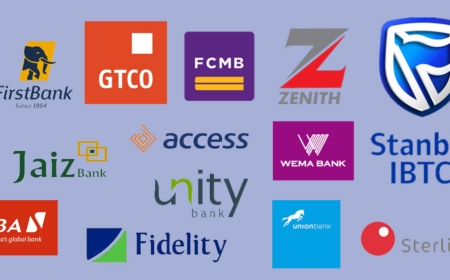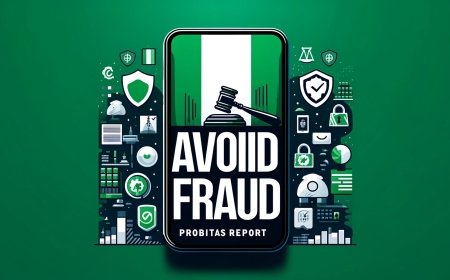AI-Powered Bank Scams: How to Protect Yourself from Fraud
AI-driven scams now account for half of all bank fraud cases. Learn how cybercriminals use artificial intelligence to deceive victims and discover key strategies to protect your money.

AI makes workers more efficient. Trouble is, AI makes criminals more efficient, too.
Thanks to increasingly sophisticated digital tools, bank scams and frauds have become a pervasive threat to consumers and financial institutions alike. From AI-powered deepfakes to elaborate check fraud schemes, criminals are employing a wide array of tactics to separate unsuspecting victims from their hard-earned money.
“Digital services, tied to faster and more efficient payment systems, enable criminals to move stolen money out of the system and across country borders at speed,” says Jason Lane-Sellers, director of Fraud & Identity at LexisNexis Risk Solutions. “This rapid movement makes stopping the flow of funds nearly impossible without proactive detection.
According to Lane-Sellers, a rising volume of scams are targeting U.S. bank customers and the digital financial services that they have come to depend on. As you learn to navigate a complex landscape of financial deception, it’s crucial to understand the latest trends and protect yourself from falling prey to scams.
The rising tide of fraud
Recent data paints a troubling picture of the scale and impact of bank fraud. According to the Federal Trade Commission, consumers reported losing more than $10 billion to fraud in 2023, marking a 14% increase from the previous year. This staggering figure represents the first time fraud losses have reached such a benchmark, and it highlights the growing effectiveness of scammers.
Types of fraud are diverse, but some stand out as particularly prevalent. Investment scams topped the list, accounting for $4.6 billion in losses, followed by imposter scams at $2.7 billion. The banking industry is feeling the impact, with more than a quarter of bank customers experiencing fraudulent activity on their accounts in the past year, according to a study by J.D. Power.
Emerging threats: AI and deepfakes
Artificial intelligence and deepfakes have emerged as significant concerns for the banking sector. In a chilling example from January 2024, an employee at a Hong Kong-based firm was tricked into sending $25 million to fraudsters after participating in a video call with what she believed were her colleagues, including the CFO. In reality, the entire call was a sophisticated deepfake created by scammers.
“Last year we all saw the democratization of AI as a productivity tool, and since then, AI-powered scams now make up nearly half of all fraud attempts,” says Adam Ennamli, chief risk officer at General Bank of Canada. “And the frontier between cyber and fraud is blurrier than ever. We’re seeing everything from deepfake CEOs asking for wire transfers to scammers using cloned voices to fool Bank customer service agents.”
Experts predict that generative AI could enable fraud losses to reach $40 billion in the United States by 2027, growing at a compound annual rate of 32%.
“GenAI allows, for a reduced cost, fraudsters to scale their operations dramatically, creating large volumes of phishing emails and social media profiles that bypass traditional fraud detection systems, thanks to their newfound sophistication and quality,” says Ennamli. “Each message can be perfectly tailored to its target, incorporating personal details scraped from publicly available data, creating compelling social engineering hooks.”

Common scams targeting bank customers
While high-tech frauds grab headlines, many scammers still rely on tried-and-true methods to target bank customers. Some of the most common scams include:
- Fake bank fraud warnings. Scammers pose as bank representatives, claiming to investigate suspicious activity on your account.
- Check overpayment scams. Victims receive a fake check and are asked to return a portion of the funds before the check bounces.
- Online lending scams. Fraudsters target those with poor credit, offering easy loans in exchange for sensitive information or upfront fees.
- Imposter scams. Criminals impersonate government officials, tech support workers, or other trusted entities to gain access to bank accounts.
- Investment scams. Promising unrealistic returns, these scams often target victims through social media or unsolicited communications.
The human element: Why people fall for scams
Understanding why people fall victim to these scams is crucial for prevention. According to research from YouGov, 61% of victims attribute their vulnerability to data security breaches, while 60% cite a lack of awareness about different types of scams. Other factors include being overly trusting when making purchases (57%) and insufficient safeguarding of personal details (52%).
“Trust serves as the foundation for these scams, as fraudsters build it over time and follow it with an urgent or emotional plea for money,” warns Lane-Sellers.
Romance scams are a prime example of the role that trust plays in making people fall for the trick, says Lane-Sellers. Scammers develop an online relationship with a lonely individual over an extended period. They then invent a heart-wrenching scenario, like a health crisis or an emergency, claiming only the victim can resolve it by instantly sending money, purchasing gift cards or buying airline tickets.
Interestingly, age plays a role in susceptibility to certain types of fraud. While 37% of those aged 65 and older have experienced bank and credit account fraud, only 15% of young adults aged 18-29 report the same. However, younger individuals are more likely to fall victim to employment scams and other frauds involving digital payment platforms.
The role of banks and regulators
Financial institutions and regulatory bodies are working to combat the rising tide of fraud. Banks are investing heavily in AI and other technologies to detect and prevent fraudulent activities. However, the rapid evolution of scam tactics presents an ongoing challenge.
“Banks are actively exploring solutions to the problem, from cutting-edge behavioral analysis to experimenting blockchain verification,” says Ennamli. “But we are constantly playing catch-up with new threat vectors like authorized push payment scams and ownership takeovers—where fraudsters takeover genuine businesses and use them to defraud their suppliers and partners, which often happen to be banks.”
Protecting yourself from bank scams
While banks and regulators play a crucial role in combating fraud, individual vigilance remains the first line of defense.
“Consumers must approach any unexpected and urgent money requests with extreme caution,” says Lane-Sellers. “Take a moment to step away from your phone or computer and question whether the person asking for money is truly who they claim to be or if the offer seems too good to be true.”
Here’s step one: Always verify any offer, deal or urgent request for money through an independent third-party channel. Call the bank directly or consult a friend to get their perspective before taking action. Take the following steps to protect yourself from scams:
- Never share personal or financial information in response to unsolicited calls, emails, or texts.
- Be wary of requests for immediate action or threats of account closure.
- Use strong, unique passwords for all financial accounts and enable two-factor authentication where possible.
- Regularly monitor your bank statements and credit reports for suspicious activity.
- Be skeptical of investment opportunities that promise unrealistic returns.
- Verify the legitimacy of any organization requesting financial information by contacting them through official channels.
- Keep your computer and mobile devices updated with the latest security software.

The future of bank fraud
As we look to the future, the landscape of bank fraud is likely to become even more complex. The rise of cryptocurrencies, decentralized finance, and increasingly sophisticated AI tools will present new challenges for both consumers and financial institutions.
However, advancements in technology also offer hope for better fraud detection and prevention. Banks are exploring the use of biometrics, blockchain, and machine learning to enhance security and protect their customers’ assets.
“The latest artificial intelligence and machine learning technology detects hidden behavioral and interaction anomalies, helping to proactively identify high risk situations,” says Lane-Sellers. “Organizations must apply these technologies across the entire customer journey, not just during payment processes or onboarding because fraudsters target every interface and interaction with their scams.”
Ennamli agrees: “AI is certainly part of the problem, but it’s also shaping up to be a key part of the solution—if banks can deploy it effectively. Meaning that it won’t take over the problem for you, it may just help you solve it faster.”
In this ever-evolving battle against financial fraud, education and awareness remain paramount. By staying informed about the latest scams and maintaining a healthy skepticism towards unsolicited financial offers, we can all play a part in protecting our financial well-being.
As we navigate the digital age of banking, remember that vigilance is your best defense against fraud. If something seems too good to be true or raises suspicion, trust your instincts and take the time to verify before taking any action. Your financial security depends on it.

- How Non Payment Of Your Debt Affect Your Integrity
- Strengthening Fight Against Financial Fraud in Nigeria
- 1.3BN Fraud: Police To Arraign Obanikoro's Son On February 27
- An Abuja-Based Bishop Sentenced To 20 Years Imprisonment For Rape of A Minor
Kindly share this story:
Contact: report@probitasreport.com
Stay informed and ahead of the curve! Follow The ProbitasReport Online News Report on WhatsApp for real-time updates, breaking news, and exclusive content especially when it comes to integrity in business and financial fraud reporting. Don't miss any headline – and follow ProbitasReport on social media platforms @probitasreport
[©2025 ProbitasReport - All Rights Reserved. Reproduction or redistribution requires explicit permission.]
What's Your Reaction?



































































































